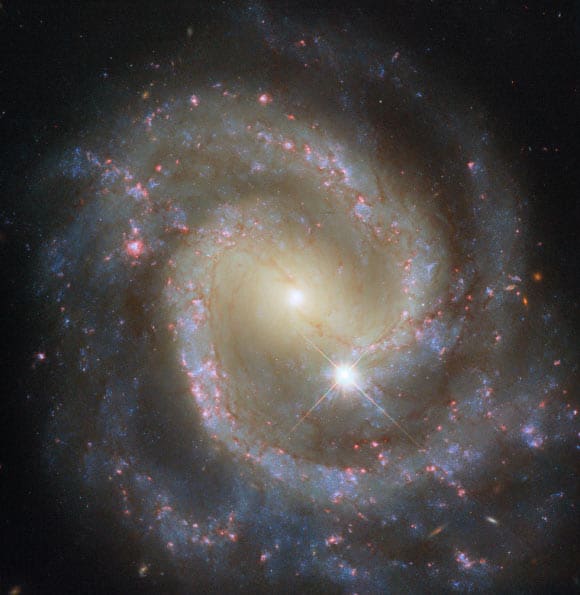Astronomers using the NASA/ESA Hubble Space Telescope have captured a striking new photo of the face-on barred spiral galaxy NGC 3507.

This Hubble image shows NGC 3507, a barred spiral galaxy located 46 million light-years away in the constellation of Leo. Image credit: NASA / ESA / Hubble / D. Thilker.
NGC 3507 lies approximately 46 million light-years away from Earth in the constellation of Leo.
Otherwise known as HIPASS J1103+18, LEDA 33390 or UGC 6123, this galaxy is nearly 50,000 light-years across.
First discovered by the German-British astronomer William Herschel on March 14, 1784, it forms a pair with a larger spiral galaxy called NGC 3501.
“NGC 3507 is classified as a barred spiral because the galaxy’s sweeping spiral arms emerge from the ends of a central bar of stars rather than the central point of the galaxy,” the Hubble astronomers said in a statement.
“Though pictured solo here, NGC 3507 actually travels the Universe with a galactic partner named NGC 3501 that is located outside the frame.”
“While NGC 3507 is a quintessential galactic pinwheel, its partner resembles a streak of quicksilver across the sky.”
“Despite looking completely different, both are spiral galaxies, simply seen from different angles.”
“For galaxies that are just a few tens of millions of light-years away, like NGC 3507 and NGC 3501, features like spiral arms, dusty gas clouds, and brilliant star clusters are on full display,” the researchers said.
“More distant galaxies appear less detailed.”
“See if you can spot any faraway galaxies in this image: they tend to be orange or yellow and can be anywhere from circular and starlike to narrow and elongated, with hints of spiral arms.”
“In addition to the far-flung companions, NGC 3507 is joined by a far nearer object, marked by four spikes of light: a star within the Milky Way, a mere 436 light-years away from Earth.”


